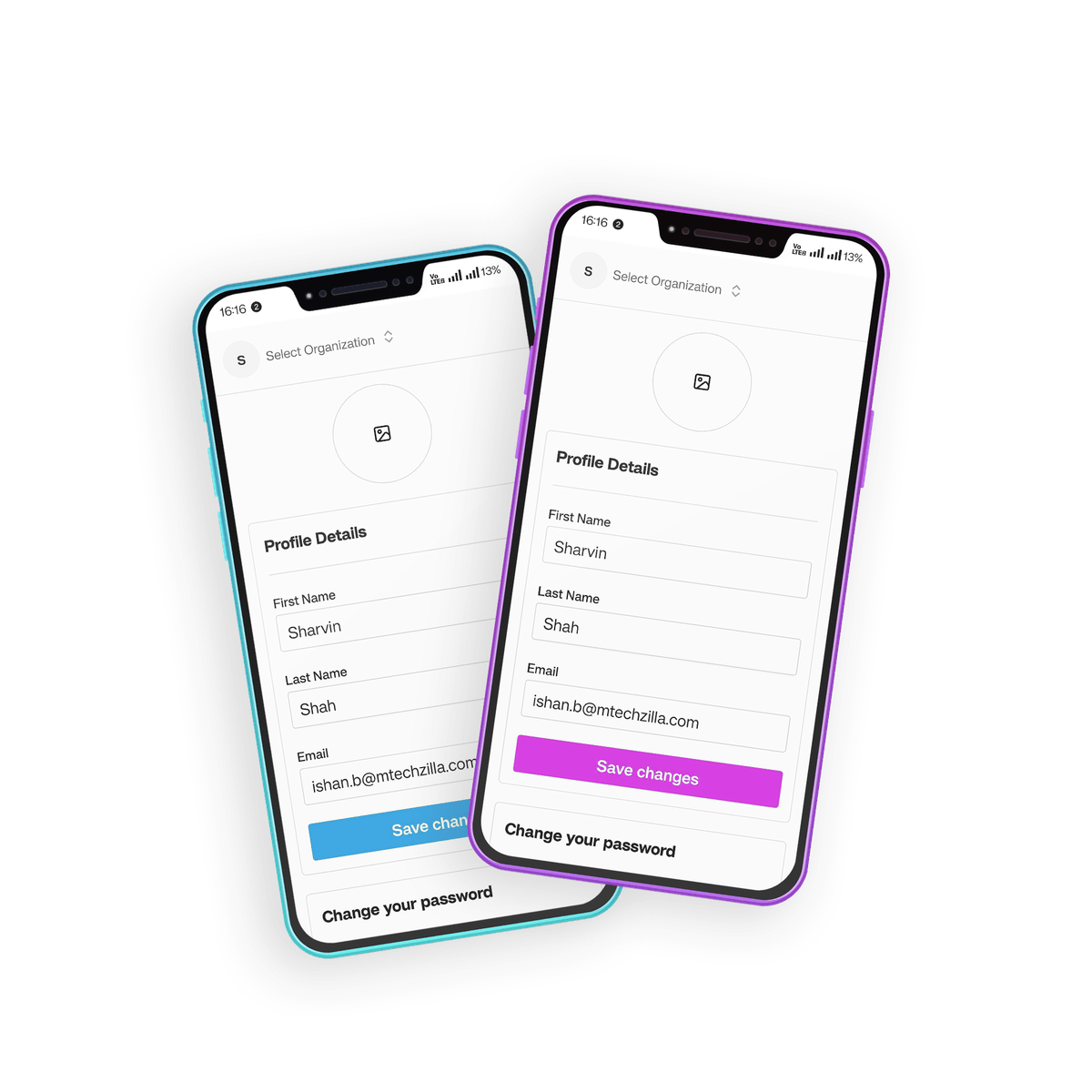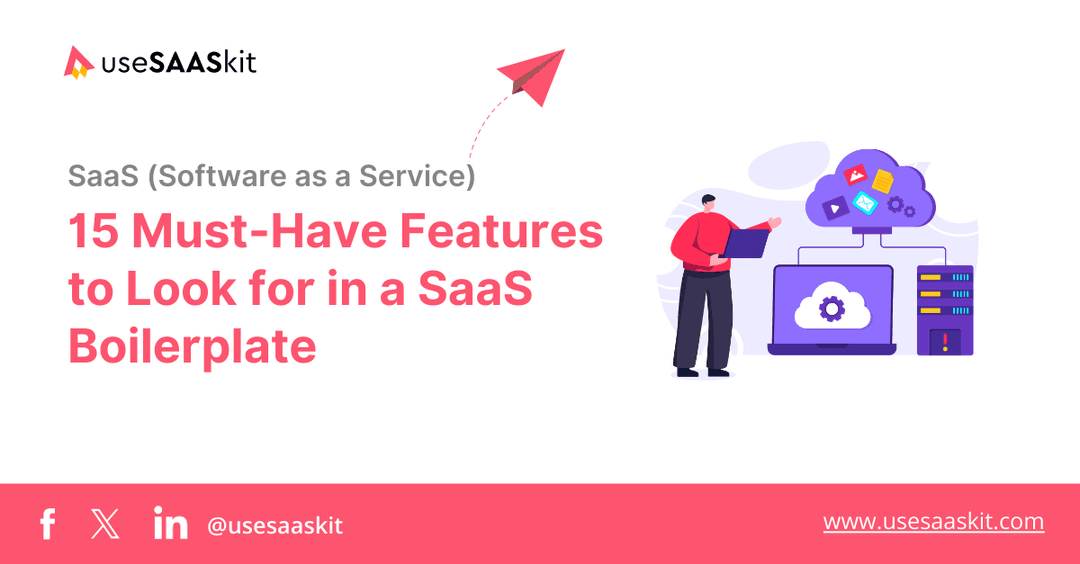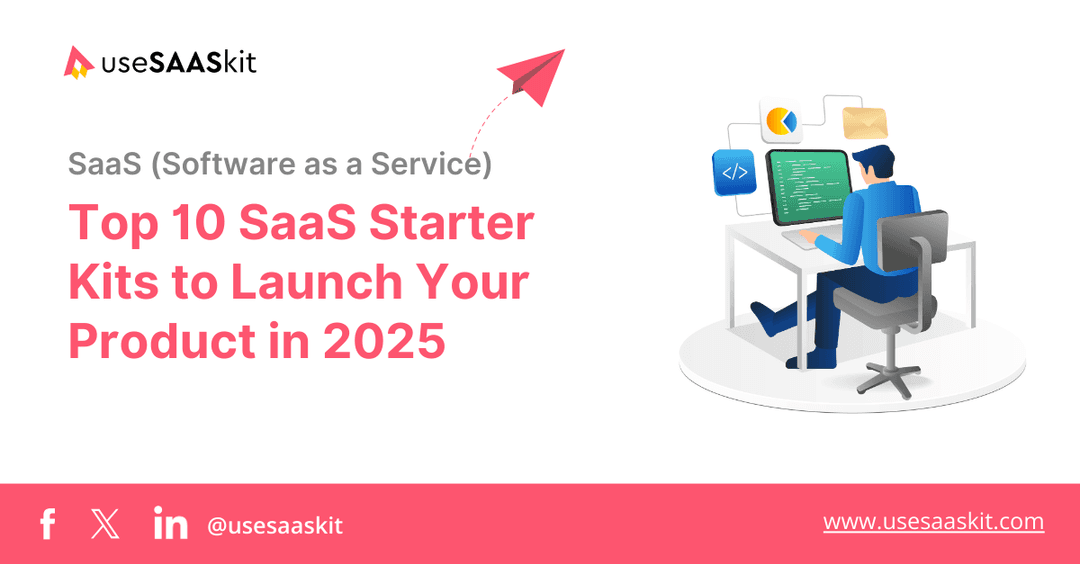Thursday, 23 Jan 2025
7 min read
How to Build an E-commerce SaaS Platform Using Next.js

In building an e-commerce SaaS platform, using Next.js makes the work faster than it has ever been. Using server-side rendering (SSR) and static site generation (SSG), Next.js allows developers to create websites that are faster and more scalable as well as highly secured. Rich with APIs, automatic routing, and great modern tool integrations, it is a good pick for creating highly strong e-commerce solutions with lesser burden on developers.
The high-performance gain that can be accompanied by SEO improvements through SSR and SSG is the aspect through which Next.js makes a difference. It allows e-commerce websites to load faster and rank higher in search engines. This feature enhances the visibility and user experience. The best part is modular development, allowing developers to build reusable components that are scalable and maintainable as the volume grows. It does provide some flexibility, whether it is catalogs, real-time inventory updates or user authentication.
The guide is designed to cover an elaborate road map for developing an e-commerce SaaS platform via Next.js. Building the development environment, adding up essential features like payment gateways, and implementation of best security practices, we will move across all major steps. You could create a rich, feature-packed software platform of the future that today's e-commerce demands by using the correct method and tools.
Table of Contents
- Introduction to E-commerce SaaS and Next.js
- Setting Up Your Development Environment
- Designing the Architecture for Your E-commerce SaaS Platform
- Building Core Features of Your Platform
- Integrating Payment Gateways
- Implementing Security Best Practices
- Testing and Deployment
- Leveraging the useSAASkit Next.js SaaS Template
- Conclusion
- FAQs
Introduction to E-commerce SaaS and Next.js
SaaS ecommerce platforms automate the job of marketing products or services online, removing the need for having to create a separate application from scratch. These platforms also provide the advantage of a much more flexible, scalable, accessible and above all cost-effective subscription-based model. That is why it is crucial when designing an e-commerce site to have server-side rendering and Further rendered websites for SEO.
Particualrly Next.js is formidably very appealing in its modular architecture, which allows the developers to build reusable components, improving development speed and making it sustainable in the long run. This feature as well as displaying the feature for managing dynamic data in quite orderly manner presents Next.js as the best fit for developing SaaS e-commerce scalable machine that would really grow in business sectors.
Setting Up Your Development Environment
There is a need for the above setup for development as the starting point:
- Install Node.js with npm: This is an absolute must to manage and run your Next.js projects.
- Start the Project: Just create a starter project for Next.js with
npx create-next-app. - Choose a CSS Framework: For a modern and responsive user interface design, Tailwind CSS or Material-UI might be your best bet.
- Create Static Typing: Achieved by configuring TypeScript, which nabs the errors and provides greater code reliability.
- Development Tools Optimization: Add ESLint for code style validation and Prettier to maintain high standards.
These processes streamline your workflow while building a strong initial foundation for efficient and error-free coding, resulting in an application that is resilient and durable when you use these techniques with Next.js.

Designing the Architecture for Your E-commerce SaaS Platform
The foundation of a scalable SaaS platform is the sound architecture. To ensure that it works effectively effectively, here's how you should structure it:
- Frontend: Use Next.js to make your website user-friendly by providing faster page loading, dynamic routes provision, and overall efficient rendering.
- Backend: Utilize Next.js API routes or an external server in terms of data processing for those complex to handle for smoother performance of the application.
- Database: Choose from PostgreSQL for real-time updates on flexible MongoDB or such needs as scalable solutions and real-time updates for Firebase.
- Hosting: Be sure to work on Vercel or AWS because you know they are very good at scalability, efficient resource management, and worldwide implementations.
With the proper foundation on which it's built, the architecture should make the e-commerce SaaS platform prepared for expansion and for delivering customers a satisfying experience.
Building Core Features of Your Platform
User Authentication
Authentication securing itself is essential in protecting user accounts and SaaS e-commerce sensitive data. NextAuth.js eases authenticating the users with other third-party providers like Google or Facebook by using several such libraries. Ensure the encryption of sensitive data and enforcement of password strict rules; also follow proper practices in handling user credentials like introducing two-factor authorization in the product for maximum security improvements.
Product Management
Product management is crucial to your platform. A robust product management system will include the functions of adding, editing, and categorizing products on the platform itself. Use efficient databases such as MongoDB and Firebase for real-time updates. Provide the function of role-based access control with administrators having command of inventory but safety and assuredness against unauthorized changes.
Cart and Checkout System
The nifty cart and checkout system for a user-friendly eCommerce experience. It should be able to upgrade, such as real-time updates for cart items with session management for tracking. Add, we bring up the code integration of discount sales, as incentive and enhancing user conversion. Enables a multistage checkout process with error handling to ensure an easy and intuitive completion of purchase process and reduced abandonment rates.
By applying these critical components, the design must integrate as a solid and secure, functional, scalable SaaS e-commerce platform.
Integrating Payment Gateways
Excellent payment processing is very much significant to an e-commerce platform's success. Some popular gateways such as Stripe, as well as PayPal, are integrated through which users can enjoy a smooth and trusted transaction experience. They offer easy to utilize SDKs to simplify the seamless production of expected features like handling payment, refunds, and tracking of transactions. Regardless of whether you are tending to global or niche markets, you can operate in numerous currencies and methods of payment; thus, making everyone convenient enough to transact.
Security is crucial along with the use of functionality, maintaining total security on a platform that will observe compliance with the PCI DSS (Payment Card Industry Data Security Standard). HTTPS has got to be prepared for encrypted communication, in addition to ensuring encrypted payment information as well as vulnerability checking done at regular intervals. When users trust PCI DSS certification, they can comfortably trust the shopping infrastructure, knowing how important this certification program and its implications on the security of card data in any transaction.
Implementing Security Best Practices
Security of user data is one integral part of protecting the platform's integrity for any SaaS application. Best practices to be followed are as under:
- Using HTTPS for Secure Communication: Using HTTPS reduces the probability that any communication would get intercepted while going from the user to the server by encrypting everything.
- Implementation of CSRF Tokens: The CSRF tokens could be used to save your valuable resources from potential XSS injection attacks. They verify the authenticity of the user's actions and serve a very important role in safeguarding sensitive operations like the submission of forms.
- Input Validation and Sanitization: Apart from preventing SQL injection attacks, these activities become necessary to sanitize all incoming user inputs. Make sure that all the inputs are checked for unwanted types and cleansed before being used for possible access violation and data ensuring.
- Frequent Updates of Dependencies: Keep all your application's dependencies updated with the passage of time. The ignored libraries or frameworks could expose your application to security issues by allowing known security vulnerabilities through them. Regular upgrades will keep your application safe.
By implementing such measures, one can actually build a stronger security framework that protects its users and supports the long-term reliability of his/her SaaS platform.
Testing and Deployment
Testing is rather crucial for your platform to run smoothly.
- Automated Testing: Use Jest or Cypress tools to help automate testing and to spot bugs early.
- Load Testing: Assess the platform's scalability and performance under high user loads.
- Manual Testing: Test the key workflows carefully, including checkout and user registration smooth user experience.
Use Vercel for deployment, a seamless hosting platform optimized for applications of Next.js, and further boost performance by using new features of Next.js like image optimization and intelligent caching for faster load times and improved user satisfaction.

Leveraging the useSAASkit Next.js SaaS Template
Accelerate your e-commerce SaaS development with the useSAASkit Next.js SaaS Template. This template includes pre-built features like authentication, and responsive components. It’s designed for performance, scalability, and security, ensuring your platform stands out in the competitive SaaS market. Start your journey with useSAASkit to save time and focus on what matters—building value for your users.
Conclusion
Creating a SaaS platform in e-commerce or other applications using Next.js makes for faster-loading e-shops, scalability, and extraordinary user experiences. Engineers are highly welcomed by Next.js's arsenal that includes server-side rendering (SSR) and static site generation (SSG) that result in e-commerce environments loaded faster on common ground, while still SEO compatible. Abiding by the course following a certain architecture, including product management systems and secure payment integration, modern tools that will answer modern business obligations can be established by developers more swiftly.
By bringing your coding project out of the lab, you can make use of useSAASkit Next.js SaaS Template. It has everything to get building with; the templated features include imperative parts like user authentication, secure APIs, and other optimized components. Reduced complexity and scalability-ready configuration speed up the platform delivery and integration process. Here, it allows you to design unique features yourself while consuming much less monotonous boilerplate development. It shortens the journey to a secure, faultless e-commerce SaaS as well.
FAQs
Why is it really suitable for a SaaS app with Next.js?
We get server-side rendering, static site generation, and part-based architecture that makes it great for creating scalable, very high-performance software as a service.
Three best gateways for e-commerce SaaS platforms?
Popular payment systems will be your choice like a Square and so on: the developer-friendly APIs, reliability, and security are coming from Stripe, PayPal, and Square.
How do you best secure your platform?
The possibilities include these things: activating HTTPS, using CSRF tokens, validating inputs, reducing the dependence on different frameworks, and updating regularly.
What is the approach to optimizing the website for SEOs?
Use a healthy mix off-limits on SSR and SSG Next.js, and then crop out the rest, such as optimized images or meta tags or structured data to improve the indexation.
What's unique about the useSAASkit template?
It can provide you with useful business scenarios that allow you to take advantage of these pre-built applications for high-quality, verified results with the least wastage of time and effort.



